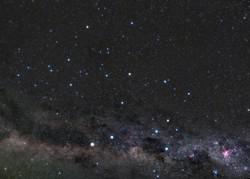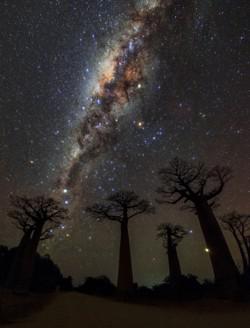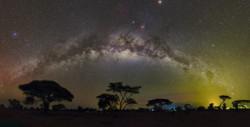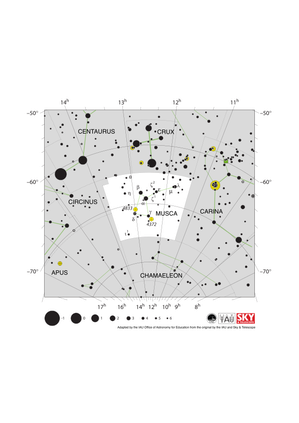Glossary term: Croix du Sud
Description: La Croix du Sud est le nom commun de la constellation "Crux" de l'hémisphère sud. Elle comporte cinq étoiles visibles à l'œil nu formant une longue croix. Elle est compacte et facilement reconnaissable. De toutes les 88 constellations officielles, Crux est celle qui couvre la plus petite surface de la sphère céleste. L'étoile la plus brillante, alpha Crucis, est un système d'étoiles triples, tandis que beta Crucis est une variable céphéide. Crux contient également un superbe amas ouvert, la "Boîte à bijoux" (NGC 4755). Crux peut être utilisée pour trouver le sud et le pôle Sud céleste. Elle est représentée sur les drapeaux de l'Australie, du Brésil, de la Nouvelle-Zélande, de la Papouasie-Nouvelle-Guinée et des Samoa.
Related Terms:
See this term in other languages
Term and definition status: The original definition of this term in English have been approved by a research astronomer and a teacher The translation of this term and its definition is still awaiting approval
The OAE Multilingual Glossary is a project of the IAU Office of Astronomy for Education (OAE) in collaboration with the IAU Office of Astronomy Outreach (OAO). The terms and definitions were chosen, written and reviewed by a collective effort from the OAE, the OAE Centers and Nodes, the OAE National Astronomy Education Coordinators (NAECs) and other volunteers. You can find a full list of credits here. All glossary terms and their definitions are released under a Creative Commons CC BY-4.0 license and should be credited to "IAU OAE".
If you notice a factual or translation error in this glossary term or definition then please get in touch.
Related Media
Cen-Lup-Cru-Panorama: Centaurus Carrying the Beast and Riding Along the Milky Way
Credit: Uwe Reichert/IAU OAE
License: CC-BY-4.0 Creative Commons Attribution 4.0 International (CC BY 4.0) icons
Voie lactée au-dessus de l'Avenue des Baobabs
Credit: Amirreza Kamkar/UAI OAE
License: CC-BY-4.0 Creative Commons Attribution 4.0 International (CC BY 4.0) icons
Voie lactée sur le parc national d'Amboseli
Credit: Amirreza Kamkar/UAI OAE
License: CC-BY-4.0 Creative Commons Attribution 4.0 International (CC BY 4.0) icons
Les étoiles les plus brillantes du ciel
Credit: Giorgia Hofer/IAU OAE
License: CC-BY-4.0 Creative Commons Attribution 4.0 International (CC BY 4.0) icons
Equatorial Milky Way
Credit: Giorgia Hofer/IAU OAE
License: CC-BY-4.0 Creative Commons Attribution 4.0 International (CC BY 4.0) icons
Related Diagrams
Crux Constellation Map
Credit: Adapted by the IAU Office of Astronomy for Education from the original by IAU/Sky & Telescope.
License: CC-BY-4.0 Creative Commons Attribution 4.0 International (CC BY 4.0) icons
Musca Constellation Map
Credit: Adapted by the IAU Office of Astronomy for Education from the original by the IAU and Sky & Telescope
License: CC-BY-4.0 Creative Commons Attribution 4.0 International (CC BY 4.0) icons















